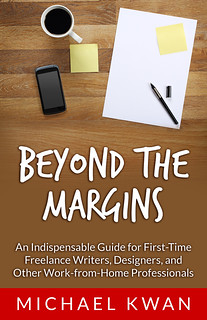
When you first start out on your career as a freelance writer, you’ll probably scramble to find any work at all. It’s hard attracting clients when you really have no portfolio and no real way of proving to potential customers that not only are you for real, but you’re also good at what you do. This is part of the reason why should have your own blog, in addition to the paid work you might do for someone else.
Earlier this month, I discussed the single best source of freelance jobs and how you should strive to develop lasting relationships with your existing client base. You already know what to expect from these people and they already know what to expect from you. All that initial awkwardness is behind you, so the two of you can just focus on the task at hand.
Following along the same line of thought, I find that it is better to have fewer clients rather than too many. This may sound somewhat counter-intuitive, because you would think that you’d be making more money if you had more customers. Well, this might not exactly be the case. When you have a small number of freelance clients offering you a good amount of work on a continual basis, you are enjoying two key advantages.
First, you don’t have to keep hunting for more freelance gigs; the work finds you. Second, the secondary tasks associated with running a freelance writing business are minimized. You’ll likely deal with fewer customer service issues and you’ll have to prepare fewer invoices. It’s just a lot less to keep track of, allowing you to focus your energies on the writing. That’s where you should be focusing anyways.
Contrast this to the individual who tries to elicit as many freelance clients as possible. They will be spending an inordinate amount of time finding customers, working out the details and price points, sorting out any customer service issues, preparing countless invoices… the list goes on.
When you work from home, whether it be freelance writing or selling widgets on eBay, you want to be as efficient and organized as possible, cutting out unnecessary steps so that you can focus on the necessary ones. One way to do is to focus on getting more work from fewer clients, rather than less work from more clients. Can you imagine trying to please all the people in the picture above?
I’m not saying that you should whittle yourself down to just one or two clients, because their needs may change over time and a major part of freelance writing is not relying on a single source; otherwise, that’s just be a regular job. Strive to find that perfect “in between” number, just like Goldilocks’ porridge. Otherwise, burnout could be just around the corner.





That is a great point, as when you are looking at a large number of clients you will be spending far more time on tasks other than the actual writing. I’ve realized this with some degree on the pursuit of private advertising deals on my blogs, as it can be very time consuming and a bookkeeping headache when you have large number of people all with one little advertisement.
“Less is More” – As in life, friends and important things… 😉
This is just one more great example of the 80/20 rule. After I took on a full-time job, I dropped nearly all of my freelance clients. Surprisingly, I retained about 70% of the income with maybe 10-20% of the effort.